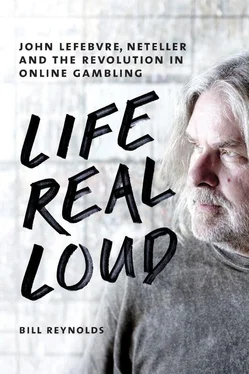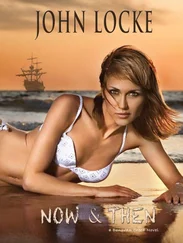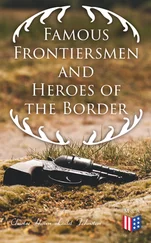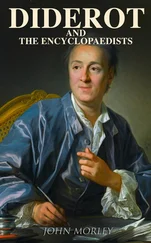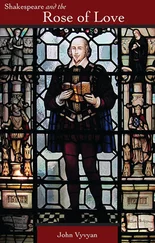Stephen Lawrence, however, would have, according to Savage. He would have started to consolidate his wealth, gotten it out of Canada, moved it offshore, moved assets into family trusts, that sort of thing. Not Lefebvre. Savage says, “The original concept was no active businesses, no significant business risk, relatively conservative investments that would manage themselves, and we use the excess cash to fund whatever makes the most sense to us, and in the meantime have a lot of fun. Then, shortly after I agreed to retire from law to do that — and not practice any law — suddenly we’re into a great range of active businesses and whatever philanthropic things he wanted to do. And the principal, it’s been whittled away — we are going to be well and truly retired sooner than anticipated.”
Savage defended his friend burning through all this money, trying to help so many, so quickly. The thinking went: There is so much to do in the world — if you’re going to help, do it now. Get it done. “If it’s all gone in a year,” he said, “so be it.”
* * *
On October 12, 2005, the University of Calgary announced a $1.2-million donation to its Faculty of Arts from John Lefebvre of Neteller. The Calgary Herald reported the next day that the money would be spent on “scholarships, a professorship, studio space, and special projects.” Lefebvre told the reporter, “The arts make better human beings.” Dean Ann Calvert called the gift an “incredibly generous gesture.”
The announcement had been in the works for some time. Lefebvre knew Calvert’s husband, Bob, a lawyer, from the old days. He kept thinking about those early mornings playing piano in Craigie Hall. He kept thinking about the great Shakespeare class he’d taken. And he kept thinking that the arts faculty could use the money more than the law faculty. He invited the Calverts to Salt Spring Island for a pleasant weekend of hanging out and kibitzing and maybe coming up with creative ways to spend the donation.
While Ann Calvert supervised, she and her colleagues — and Lefebvre, who wanted to remain arm’s length in principle but relayed his ideas anyway — devised ways to maximize the contributions for arts in general and students in particular. The exercise proved joyous from start to finish, whether it was getting Lefebvre’s old English professor, James Black, to record his Shakespeare lectures for posterity or upgrading technical facilities for student use.
By far the best time Lefebvre had, though, was being the guest of honor at a cocktail party Calvert threw for him on campus. She ordered everyone at her disposal to put an embargo on press release material and keep quiet about the nature of the announcement. “We invited all these people who knew John when he was at university. They came but they didn’t know why. It was packed.”
There were formal speeches about the money and what it would do, and Lefebvre wore a suit for the occasion. There was also a cocktail hour, but the real blast came when he strapped on his Fender electric guitar to jam with a blues band from the music department called the Roosters.
“He got a huge charge out of that,” says Calvert. “We planned it to showcase what John does best and that is to party and play music.”
* * *
When Lefebvre made up his mind to give it all away, he didn’t mean to imply that he wasn’t going to enjoy himself. Not a chance. One case in point was a benefit jazz singer Diana Krall organized for the Vancouver General Hospital & University of British Columbia Hospital Foundation. The annual bash was held to support research in the areas of leukemia and bone marrow transplants. Krall’s mother had been diagnosed with multiple myeloma in 1996 and received a bone marrow transplant, which netted her six additional years of life. Krall, moved by this, wanted to help researchers. The fundraisers were held at a large convention room in the Fairmont Hotel in downtown Vancouver.
Lefebvre entered the picture because someone in his pal Jim Hoggan’s Vancouver public relations office was working on the benefit and snagged him. He attended a couple of benefit shows between 2005 and 2006, buying a table of ten tickets for the first and a half-dozen for the second, bringing along friends so they could mingle with the high-rent musical talent. He had a great time at both, but the real treat for him was watching Elvis Costello, Krall’s husband, perform up close: “Elvis with an acoustic guitar was an amazing experience.”
At the first event, he recalls, Costello, Krall, Bill Clinton, Tony Bennett, Elton John with his new husband David Furnish, and Sarah McLachlan were the big names. At the second, it was James Taylor, Costello, John, and others. Costello sold a Fender Jaguar from his collection that was once owned by Johnny Marr. Lefebvre bid fifty grand for it — he didn’t know from the Smiths — and gladly watched Costello sign it in front of him.
There was a silent auction and a proper bidding auction. Clinton pulled out a little book of recipes from his hometown of Little Rock, Arkansas. It might not have been an official auction item, but he offered it for bid. Lefebvre kept going after it, even after he could have gotten the thirty-page booklet for twelve grand. After that, he started to bid against himself.
“And then I said something ungentle like, ‘C’mon you guys, what’d you come here for?’” It was all for a laugh — playfully goading his fellow well-heeled attendees. “People started to get the idea to bid and I would release them of their obligations.” He did enjoy letting a few bidders dangle, though — going … going … — before kicking his own bid up another notch. This reckless fun drew the attention of Chip Wilson, the billionaire founder of Lululemon Athletica, who was sitting nearby. He finally had to pipe in, “Who is this guy?”
“They kept auctioning and I kept buying,” Lefebvre says. “Diamonds and watches and vacation packages and a bunch of art. Over the course of the two events I spent half a million bucks.” Nobody, Lefebvre says, had more fun giving it away. The emcee was Vicki Gabereau, the former CBC host, who, upon finding out the name of Lefebvre’s company, commented, “Eagle Medallion Fortress — that’s a macho name, isn’t it?” Lefebvre replied, “Yeah, real macho. It’s the name my daughter gave to her treehouse when she was a kid.”
* * *
Lefebvre got an idea in his head to make this giving business official, creating a formal entity called the Lefebvre Foundation and enlisting old friends like Mike Greene and old lovers like Jane McMullen to be on the board. He was reaching out. He was saying, pick your job description, then come play with me. “When he first asked me to come work with him,” McMullen says, “it was to manage his financial affairs and help with the foundation, which was to give money away to good causes. But it didn’t work out that way. We made decisions to spend $25,000, and the rest was John. A lot of it was ego-driven.”
McMullen points to a foundation meeting in 2006—a party at Jim Hoggan’s place in Vancouver — as a crucial turning point:
The Foundation hadn’t been around that long, and we were discussing the board mission statement and how it would operate. It was exciting. John said at some point we were going to have $70 million to work with. And then during the party people were coming up and shaking our hands. David Suzuki’s board members were there and it was, “Oh thank you, thank you,” and we were looking at each other like, “What’s going on here?” Then there was an announcement that a $10-million gift was being given to the Suzuki Foundation from the Lefebvre Foundation. We didn’t know. The next day, we were like, “John, is there anything else we should know about what you’ve already done?”
Читать дальше
